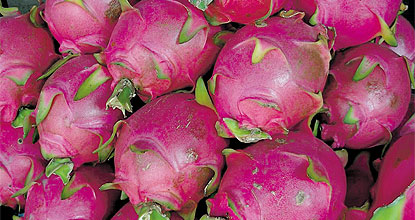Showing 1 - 6 of 6
Cartier beauty travels well
Life, Noko, Published on 17/02/2023
» With international travel resuming, so too has Cartier been on the move.
A stroll in another world
Life, Pattarawadee Saengmanee, Published on 23/06/2022
» After Thailand's first zoological park closed in mid-2018, Dusit Zoo relocated to Pathum Thani and reopened earlier this year to serve as a new recreational attraction for families interested in learning about wildlife and biological systems.
Pink cactus for perfect skin
Life, Noko, Published on 20/08/2019
» Formidable though they may appear, the sharp thorns of the prickly pear cactus have never been enough to put people off. Long a staple of the Mexican diet, the cactus is also a herbal remedy and, potentially, a sustainable source of biofuel.
Walk on the wild side
B Magazine, Karnjana Karnjanatawe, Published on 03/02/2019
» Thin fog was slowly floating against the backdrop of mountains above the Loisaba Conservancy in northern Kenya. It was nearly dawn when I woke up in my tented camp to the songs of chirping birds.
Beyond the wall
Life, Karnjana Karnjanatawe, Published on 02/02/2017
» A heavy metal door swings open to reveal a spiral staircase. The stairs lead us to the bell tower in the Metropolitan Cathedral in the heart of Mexico City.
Dragonfruit roaring across southeast asia
B Magazine, Normita Thongtham, Published on 25/11/2012
» The first dragonfruit I ever tasted came from Vietnam, brought by a Thai friend who had an import-export business there. I thought it was strange that I was eating the fruit of a cactus; until then the only cactus I knew of with an edible fruit was the prickly pear in the genus Opuntia, which I've never tasted. The dragonfruit _ Hylocereus undatus, and christened kaew mangkorn in Thai _ was much bigger, and I marvelled at its bright pinkish-red skin with green-tipped scales, and white flesh dotted by tiny edible sesame-like seeds. Eating it chilled, I couldn't quite pinpoint what it tasted like; it had a flavour all its own, which was refreshing. It was in the mid-1990s, and I remember saving some of the seeds, which readily germinated.









